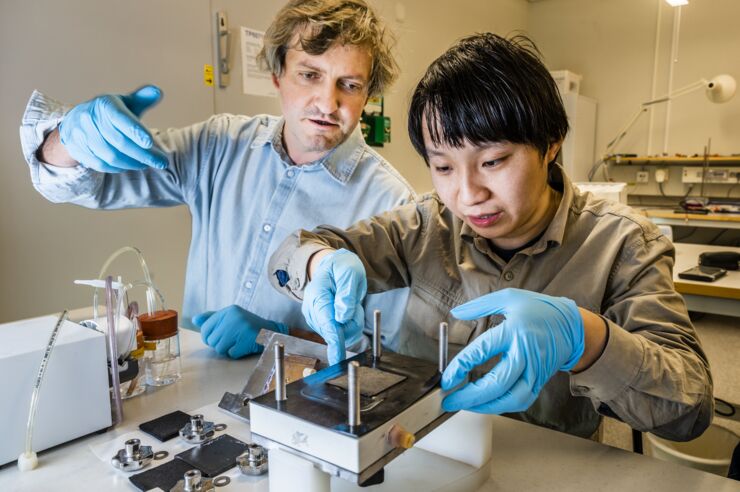Our C-Flow Electrochemical Cell used to demonstrate the first all-organic redox flow battery.
Researchers at Linköping University have developed the first all-organic redox flow battery.
Principal research engineer, Mikhail Vagin at Linköping University along with colleagues has been successful in demonstrating the first completely organic redox flow battery using one of our C-Flow electrochemical cells.
The redox flow battery uses a solution of quinone molecules extracted from forest-based materials. With electrodes made entirely of organic material that generously increases energy density, this opens up the possibility to manufacture completely organic redox flow batteries for large capacity energy storage from renewable sources.
We were approached by Linköping University in 2019 who required a custom design for our C-Flow 1×1 that was compatible with the chemistry they used. Our standard cell design uses a cPVC (chlorinated polyvinyl chloride) cell frame, in this instance we designed our C-Flow 1×1 electrochemical cell using PEEK (polyether ether ketone) cell frames, equipped with complimentary seals and gaskets. We have manufactured similar cells for a variety of applications in Polyvinylidene fluoride (PVDF) and Polytetrafluoroethylene (PTFE).
We further supplied Linköping University with a C-Flow 5×5 which was used as the aqueous organic redox flow battery (AORFB) technology hardware in this development.

Photo taken by: Thor Balkhed
You can read more on the work undertaken at Linköping University here: https://liu.se/en/news-item/de-har-tagit-fram-det-forsta-organiska-batteriet-
